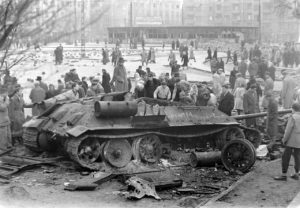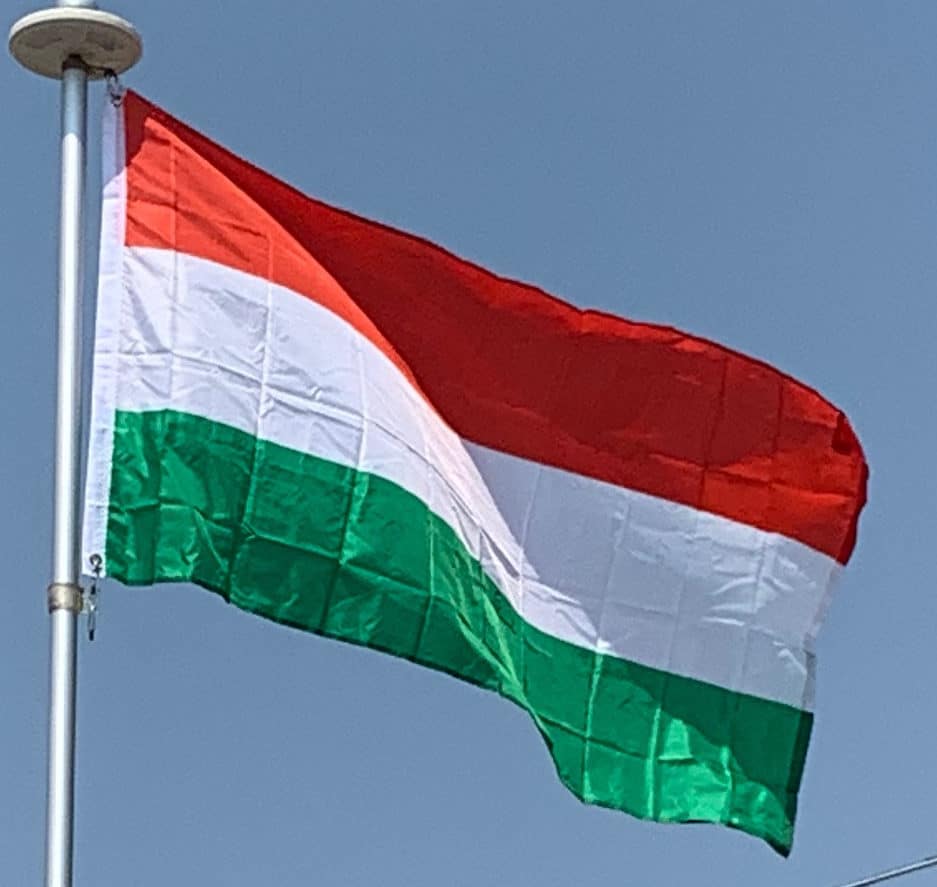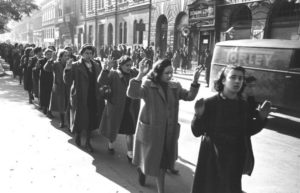
After German occupation, Hungary participated in the Holocaust. During the German occupation in May–June 1944, the Arrow Cross and Hungarian police deported nearly 440,000 Jews, mainly to Auschwitz. Nearly all of them were murdered. The Swedish Diplomat Raoul Wallenberg managed to save a considerable number of Hungarian Jews by giving them Swedish passports. Rezső Kasztner, one of the leaders of the Hungarian Aid and Rescue Committee, bribed senior SS officers such as Adolf Eichmann to allow some Jews to escape. The Horthy government’s complicity in the Holocaust remains a point of controversy and contention.
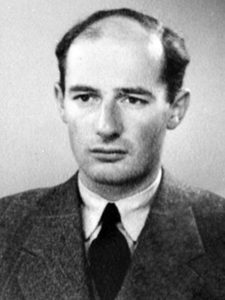
The war left Hungary devastated, destroying over 60% of the economy and causing significant loss of life. In addition to the over 600,000 Hungarian Jews killed, as many as 280,000 other Hungarians were raped, murdered and executed or deported for slave labor by Czechoslovaks, Soviet Red Army troops, and Yugoslavs.
On 13 February 1945, Budapest surrendered; by April, German troops left the country under Soviet military occupation. 200,000 Hungarians were expelled from Czechoslovakia in exchange for 70,000 Slovaks living in Hungary. 202,000 ethnic Germans were expelled to Germany, and through the 1947 Paris Peace Treaties, Hungary was again reduced to its immediate post-Trianon borders.
Communism 1945–1989:
Following the defeat of Nazi Germany, Hungary became a satellite state of the Soviet Union. The Soviet leadership selected Mátyás Rákosi to front the Stalinization of the country, and Rákosi de facto ruled Hungary from 1949 to 1956.
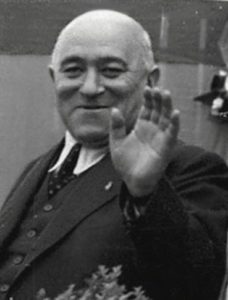
His government’s policies of militarization, industrialization, collectivization, and war compensation led to a severe decline in living standards. In imitation of Stalin’s KGB, the Rákosi government established a secret political police, the ÁVH, to enforce the new regime. In the ensuing purges approximately 350,000 officials and intellectuals were imprisoned or executed from 1948 to 1956. Many freethinkers, democrats, and Horthy-era dignitaries were secretly arrested and extrajudicially interned in domestic and foreign Gulags. Some 600,000 Hungarians were deported to Soviet labor camps, where at least 200,000 died.
After Stalin’s death in 1953, the Soviet Union pursued a program of destalinization that was inimical to Rákosi, leading to his deposition. The following political cooling saw the ascent of Imre Nagy to the premiership, and the growing interest of students and intellectuals in political life.
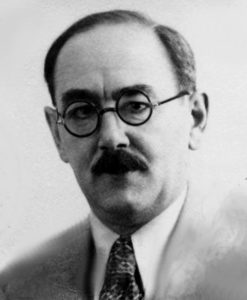
Nagy promised market liberalization and political openness, while Rákosi opposed both vigorously. Rákosi eventually managed to discredit Nagy and replace him with the more hard-line Ernő Gerő. Hungary joined the Warsaw Pact in May 1955, as societal dissatisfaction with the regime swelled. Following the firing on peaceful demonstrations by Soviet soldiers and secret police, and rallies throughout the country on 23 October 1956, protesters took to the streets in Budapest, initiating the 1956 Revolution. In an effort to quell the chaos, Nagy returned as premier, promised free elections, and took Hungary out of the Warsaw Pact.
